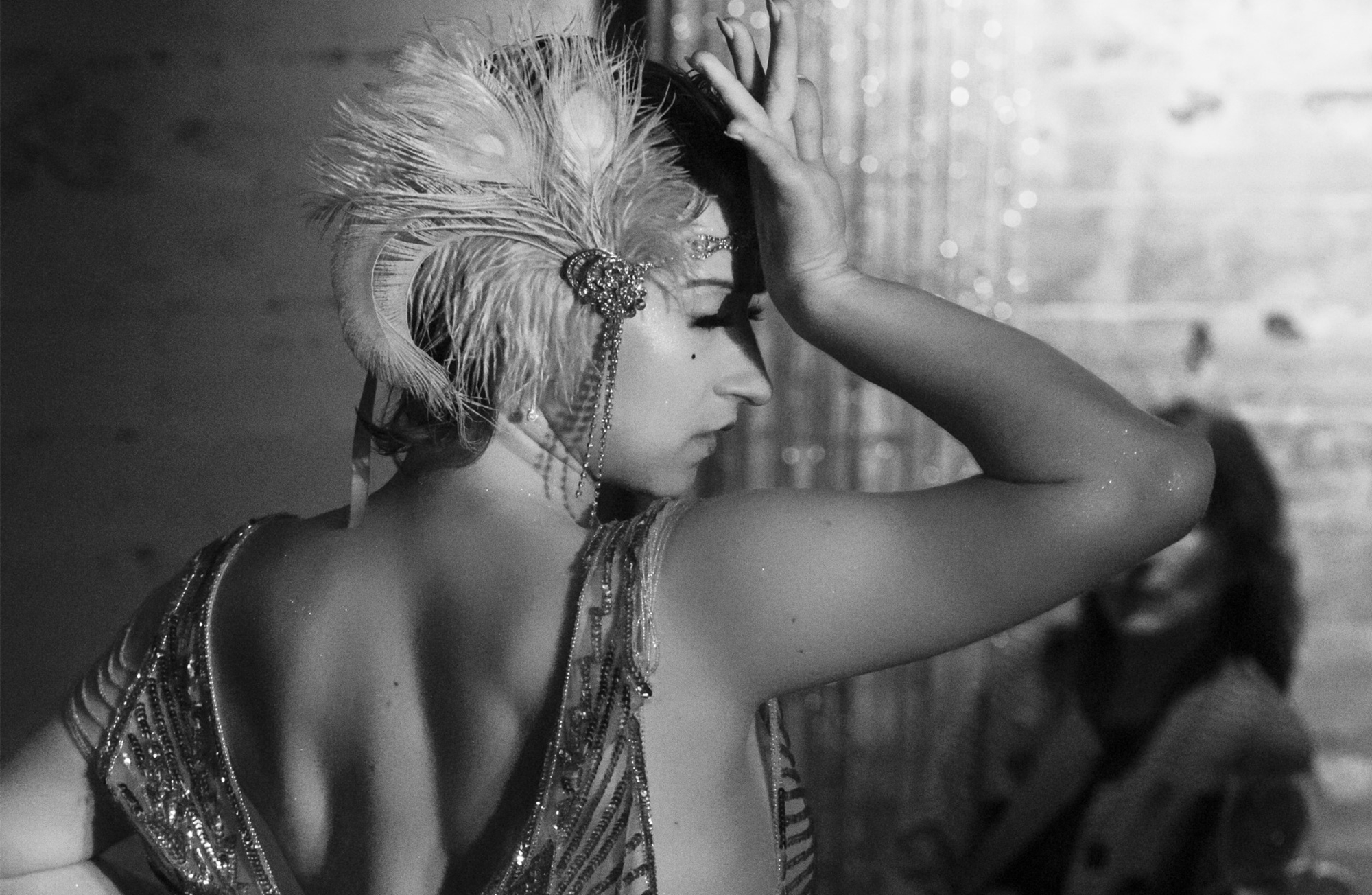An interview with Velvet Delacroix
Can you share a bit about your connection to art? Has it always been an integral part of your life?
I have always loved art. I’ve found it helpful as a way of expressing myself and connecting in a world where I often felt isolated and misunderstood. As a child, I would draw up whole worlds and ecosystems with my sisters. I also loved to sing constantly, much to their chagrin. Later on, we each had our own comic series we would share with each other. Then in high school, I got into a few art classes, theater, show choir, and so on. However, I did not really think of myself as an artist until I was majoring in Fine Art at university. These days, I don’t much distinguish where art starts or stops.
How did you begin your journey with burlesque?
Funnily enough, [it was] because of my school counselor at university. I had been in a very abusive relationship and needed a way to reconnect with community — and my body — in a healthy way. I wanted to try learning hip-hop dance, but did not really want to be in classes with young children or people that felt ‘stuck-up’. In my search for classes, I came across a dance studio that taught belly dance, Bollywood, striptease, burlesque… and specifically, a hip-hop style of burlesque! I figured these people who took their clothes off on stage couldn’t be too uptight, yet I still balked at the six-week commitment to a class. It was the extra encouragement from my school counselor that got me to follow through, and I’m so glad for that!
What does performance art provide in your life?
Performance gives me freedom, joy, liberation, connection, and expression. It gives me permission to take up space, to play, to explore serious and silly ideas. Performance also provides feedback to understand where there are boundaries or overlaps between what is authentic and what is performative. That relationship is very clear when there is an audience and a stage. I find that a lot of ‘real life’ can also involve elements of performance, even if we are not framing it as such in our day-to-day. In that way, performance helps me understand my relationship with myself and other people. I can make more conscious decisions about what I choose to participate in concealing or revealing.
Do you feel that participating in and learning new ways of moving the body can be a creative outlet and help people to explore a connection to art?
Absolutely! Anything we feel or connect with has to come from the body; so, of course being more in tune with your body can help you be more in tune with art.
How have the various modalities of body movement practices you have taught, performed, and learned impacted you on a personal level? Artistically?
The existence of the body and that everyone lives in a body is just so undeniable. Yet it seems like we live in a society that constantly seeks to overcome or deny this corporeal truth. Addressing my body, as well as caring for it and its limitations as an inextricable part of human experience, has really opened up a whole world for me.
For such a long time, I lived in repression and denial. People in my life imposed a lot of rules on me. The rules did not feel right, and even when I tried, I couldn’t follow them as well as other people did. I was constantly getting feedback that I was worthless, and [told] to deny the feelings I had in my body, to overcome that with my mind (as if the mind and body were separate, and I simply wasn’t trying hard enough). As a result, I became very shut down, aggressive, and cynical. I was harshly judgmental.Then, ultimately, I was passing along that same set of discomforts that I had always felt was wrong.
Getting back into my body with movement practices helped me to be able to truly listen to myself. In untangling what is or isn’t performance, I have been able to uncover more authenticity in every aspect of my life. I work a lot on cultivating radical acceptance. Then in my art, I can share that, which gives other people space to do the same. The body is a very direct and intimate way of communicating. We all experience the vulnerabilities of being mortal and human in our bodies, so it’s very easy to connect from there.
What do you want the community to understand about burlesque or other forms of performance art?
Performance is so beautiful, fun, amazing, and vulnerable! Being open to that community as well as the feelings and conversations it brings up can be so valuable in opening up a whole world within yourself.
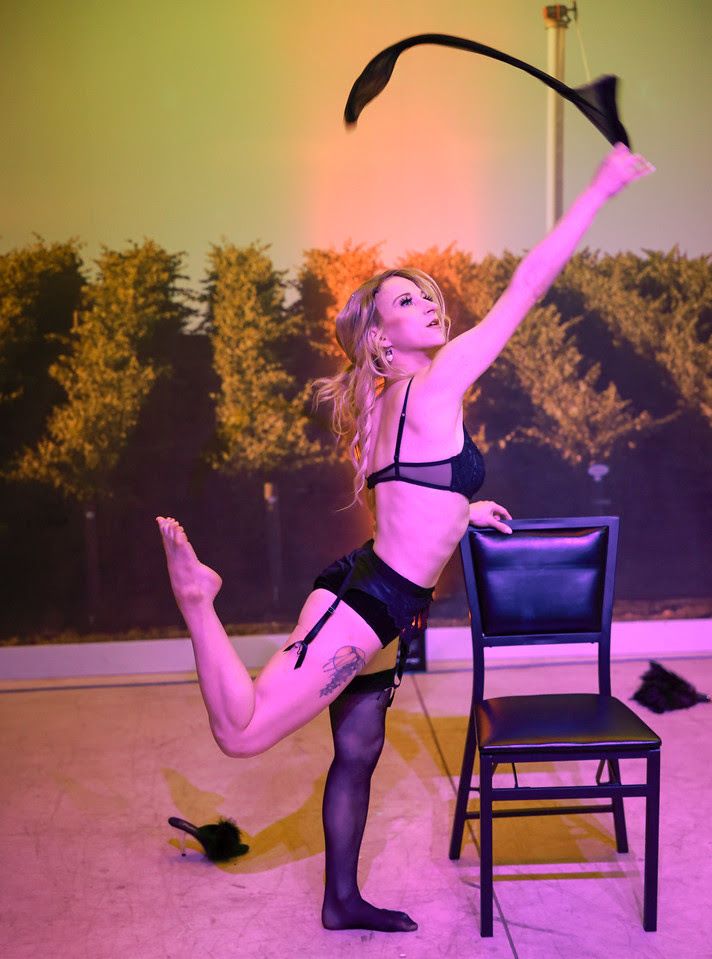
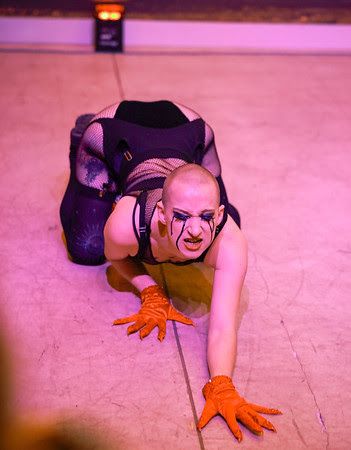
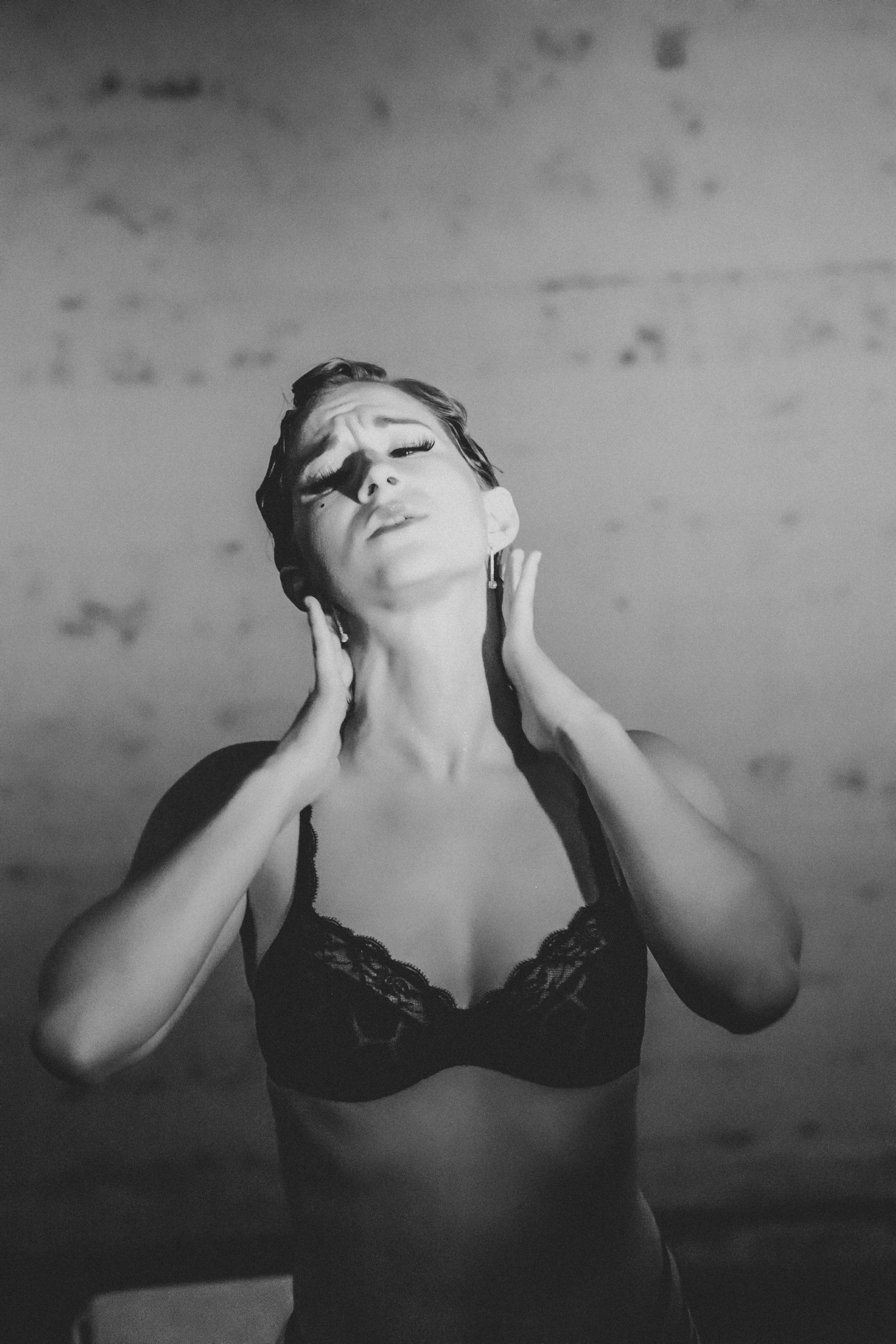
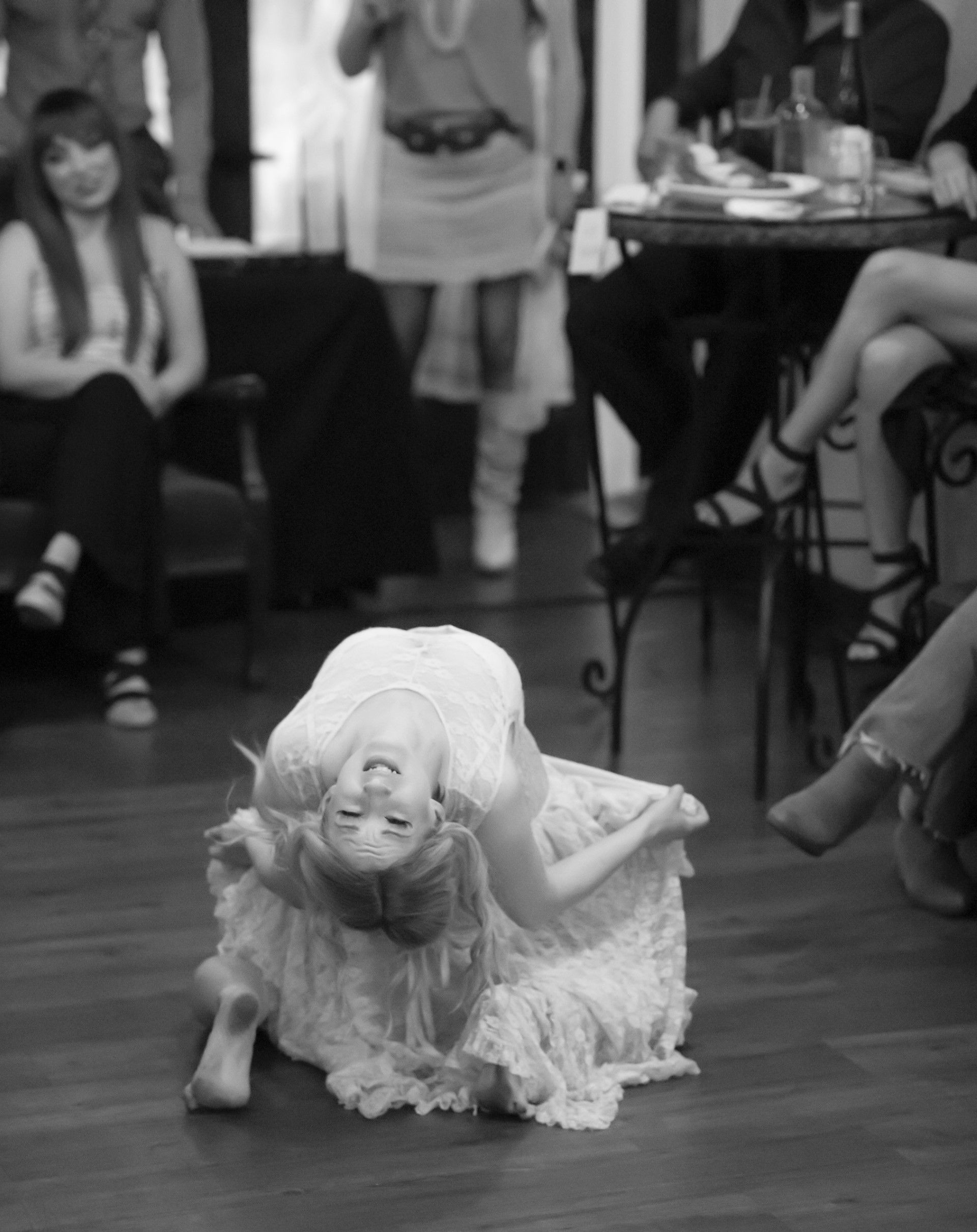
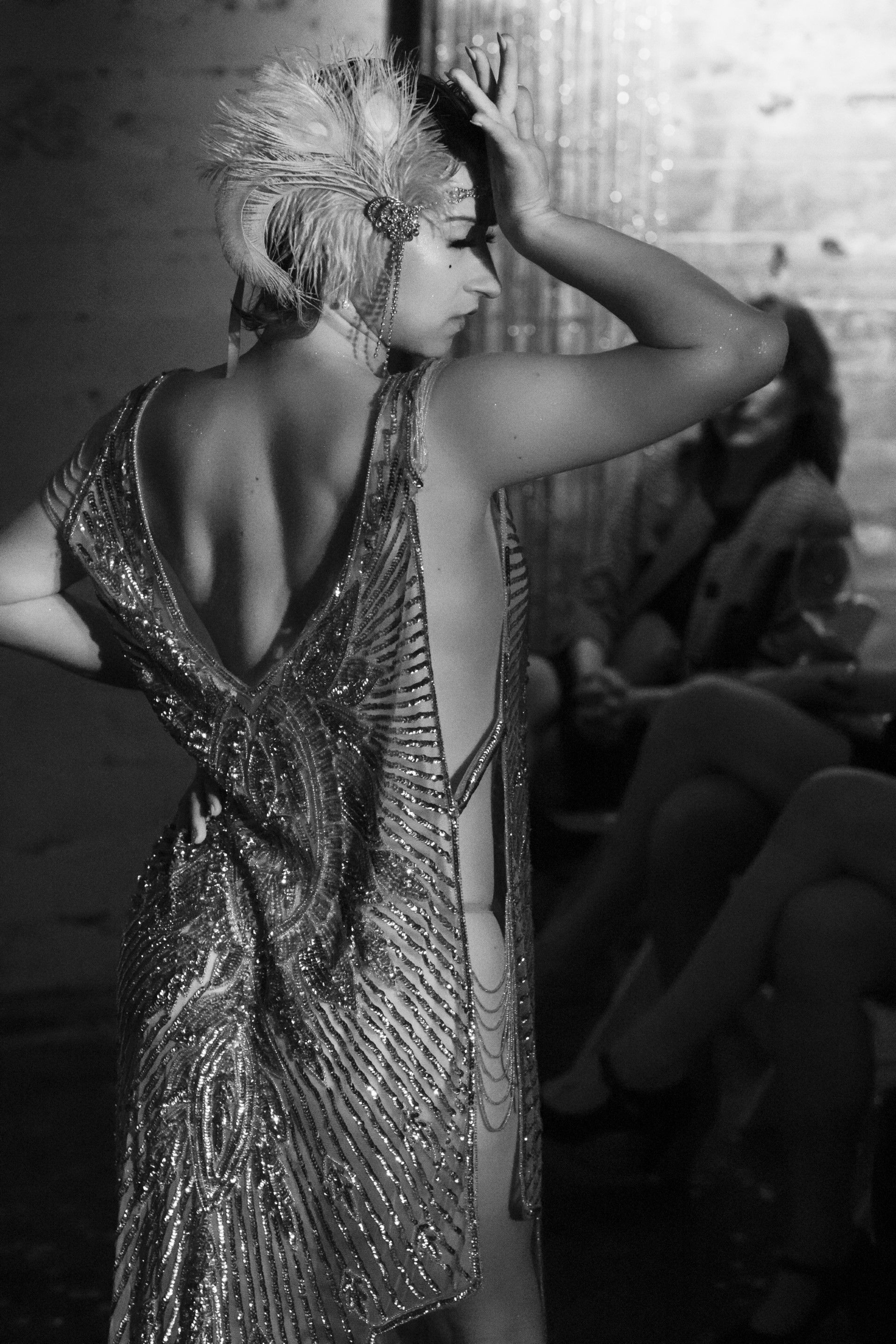
I took a burlesque class with you at one time and remember feeling a strong sense of community amongst myself and the other people taking the class. I experienced this same feeling taking a class at Wonderland Pole. Both classes had a sensual undertone, which required the instructor to create a container of safety and comfort for their students. How do you create that sense of safety and comfort? What do you think the implications of these kinds of experiences can be outside of the classes/performance spaces for participants? How do these themes show up for you in your life?
I’m so glad to hear that! That sense of community became so dear to me in my first experiences with burlesque at Starlight Studio, and is so valuable as a human experience. It gives me a big smile and warm fuzzies when I hear those values come through in my classes.
There’s something to be said for a group of people being willing to show up and do something that feels vulnerable. So already, there is that connection. I like to acknowledge that each person is probably feeling some of that, and that the community is important in that setting; I am not the only important one in the room. Each person is important in contributing to that atmosphere. As an instructor, I like to begin classes by doing some things that allow people to share with each other and feel a little bit silly, like drawing with crayons, making funny sounds, or racing each other scooting on their kneepads. It helps to highlight that we’re in this together and that not everything has to be serious or perfect.
That freedom to be imperfect and to still feel joyful, loved, and accepted is unspeakably important. You have to have a willingness to be vulnerable in order to create connection.
Connection is a cornerstone of humanity. That’s how we humans became so successful as a species! We don’t have big teeth or claws or hard shells, horns, hooves. We’re overall very squishy and weaponless. Yet, because of our ability to communicate, connect to each other, and work together, we have survived 300,000 years and there are billions of us here.
How do the themes of worthiness show up in performance art and body movement, and how does that connect to creative practice in general?
Worthiness really shows up everywhere. When it is physically YOU on display, that can come a lot more into the forefront. Part of what I love so much about burlesque is how it allows me to not take myself so seriously all the time — there is room for mistakes, and it is meant to get silly and irreverent. I will get really in my head planning out everything with the choreography, costumes, themes and all. Then, when I start to get stressed, I catch myself and have a laugh. Ultimately, it is very funny to overthink about what amounts to glitter and tiddies for most people. I know that my audience is there to have a good time.
That element of not getting too serious, not having to be the best, or even ‘good’ — just connecting to myself and others while doing what I feel like doing — is so helpful when it comes to ALL creative practices. Perfectionism kills so many good things.
I once read that sexuality and creativity come from the same source; does this feel true to you?
Yes, energy is energy. Sensuality and creativity are both generative uses of energy. In yogic philosophy, the sacral chakra, Svadhisthana, rules over connection, sexuality, [and] creativity. It is also related to the element of water, which is fitting for the ‘flow state’ people can experience with both art and sensual activities.
PLUGS/GEN INFO:
Nat Blakely, aka sensual sensation Velvet Delacroix (they/them/any) @velvetdelacroix on instagram
Teaches workshops and weekly classes at Wonderland Pole and Dance
PHOTOS by Trey Busch | instagram: @inmytreephotography
Ashleigh Rogers is an artist, art instructor, and facilitator in Tri-Cities, Washington. Her work explores the themes of connection and intergenerational stories through experimentation in painting, photography, installation, and sculpture. Ashleigh is passionately dedicated to facilitating accessible arts programming in her community.
Find her on Facebook: fb.com/AshleighRogersArt or Instagram: ashleigh.a.rogers

